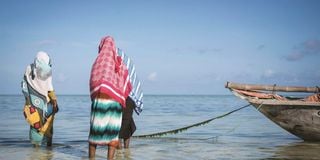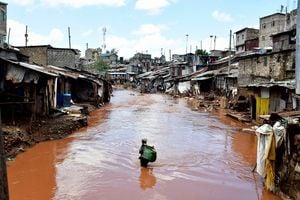HIV inequity is still with us

Sex for fish is not a new problem. This was a problem that plagued the industry in the Lake Victoria region, resulting in an explosive rise in HIV prevalence among the fishing community.
What you need to know:
- Economic empowerment is the key to end this inequity. The young women and girls who are 50 per cent more likely to contract HIV compared to their male counterparts require intentional investment in their future.
- Let us strive to even out the score and give our future generation a chance at an HIV-free life!
It has been 23 years since HIV/AIDS was declared a national disaster by former President Daniel Arap Moi. The country was grappling with a new reality while the world was scrambling for a cure.
It has been a long, tough journey to get where we are today, intentionally working towards reducing the mortality rate, the rate of new infections and getting as many people on treatment as possible. Though we aren’t there yet, the impact has been impressive. Or not…
The past few years have not been reassuring, especially among the adolescents. The rate of new infections among the young people is not encouraging. With regard to new HIV infections in Kenya, adolescents and young people aged 15 to 24 account for 42 per cent of the total number! This is not acceptable!
For almost two decades, the government, with the support of partners, has endeavoured to provide treatment to all Kenyans living with HIV. The past decade has shown promising trends with a reduction in the prevalence of HIV in the country from the double digits at the turn of the century, down to an impressive 4.3 per cent in 2021.
However, these gains are not uniform across the divide. While we continue to celebrate the adolescents born with HIV who have beaten the odds to see early adulthood, we must remain very conscious that their counterparts who were privileged enough to grow up HIV-free are now under threat.
A report published in 2017 by Kilifi County government and Faith to Action Network reported that one in four adolescents in Kilifi was pregnant! We commend the county government for its concerted effort to reign in the situation. Over the past two years, together with The Challenge Initiative, the interventions put in place have seen the adolescent pregnancy prevalence fall from 31 per cent to 14 per cent!
Pregnancy is a clear indication of unprotected sex; a telltale sign of the risk of HIV transmission. Females are disproportionately more affected, with the 15-19-year-old age group having the highest incidence of new infections. Unfortunately, they are the same ones who are less likely to know their HIV status, initiate and adhere to treatment and achieve good viral suppression.
Philomena, the Kilifi North Sub-county reproductive health coordinator, narrated to us the challenges of the young women in the county. Being a county reliant on fishing as a major economic activity, many young women depend on the trade to survive. However, the gender inequity at play does not favour them.
The fishermen bring their wares to the fishing dock in the morning but the poor women vendors cannot even buy the fish without paying a price. The practice of “kutoa mambwe” is so commonplace, it has been normalised. For a woman to access the fishermen’s bounty, she must first give in to sex. No, the sex does not buy her any fish, it only buys her access to buying the fish. She pays double the price, first with her body, and then in cash!
What is even more despicable about the practice is that majority of the fishermen who are able to afford a fishing vessel are not young people. Yet they have the upper hand in exploiting the youngest of women, coming from the most disadvantaged background, forced by circumstances into the fish-mongering business.
These young women and girls continue to remain at risk of contracting HIV, further demonstrating the gender disparity that has persisted over two decades. Sex for fish is not a new problem. This was a problem that plagued the industry in the Lake Victoria region, resulting in an explosive rise in HIV prevalence among the fishing community. Fortunately, this was easily cured by empowering the women. The US Peace Corps donation of fishing boats to women’s groups elevated the women economically, eliminating the underdog situation that put them at a point of disadvantage sexually.
It has been three decades. It is time to put a stop to the inequity around HIV infection. Our adolescents and young people are the bulk of the population in this country. It is impossible to ignore this fact and the potential it holds to plunge us back into the dark days gone. The investment made in HIV prevention and care is way too much to watch the gains slip away. We must focus on the adolescents and youth if we are to move to the next level.
Economic empowerment is the key to end this inequity. The young women and girls who are 50 per cent more likely to contract HIV compared to their male counterparts require intentional investment in their future. Let us strive to even out the score and give our future generation a chance at an HIV-free life!
Dr Bosire is an obstetrician/gynaecologist



